Art is Alchemy: A Guide to Developing Your Artistic Vision // CHAPTER 3: "What is Art?"
Art is Alchemy: A Guide to Developing Your Artistic Vision
Chapter III: "What is Art?"
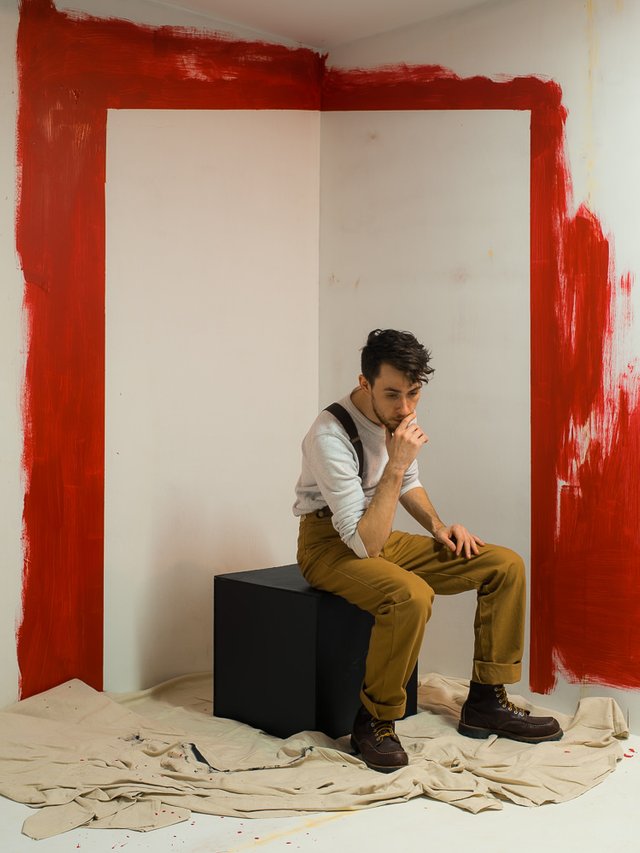
I suggest you read Chapter I & Chapter II.
Introduction:
When I began developing my artistic vision, I also chose to begin consciously pursuing a greater overall understanding of Art. By reading, observing artwork and reflecting upon my experiences, I amassed a great deal of notes on the ideas that seemed to float. These activities culminated into my overall understanding of Art and the artist’s purpose, insights from which have lead me to developing the seed of my own artistic vision.
While this was happening, I felt an urge to write a guide. This guide would help like-minded artists toward developing their own artistic vision. This guide would not be a onetime introductory, but would be applicable throughout all stages of an artist's creative journey. I imagined a guide that I could return to at any point in my lifetime, one that would serve me throughout all my endeavors. Of course, I assumed this guide would be written far in the future, most likely after I had well-established myself as an artist. Still young in age, I recognize how much more I have yet to experience, the great deal of information I still have to digest, and how many ideas and ideals I have yet to live out. Quoting Thoreau, “How vain it is to sit down to write when you have not stood up to live.”
I did not intend Art is Alchemy to become such a guide. But as I continued writing, ideas continually presented themselves to be written. Even in the process of organizing these concepts into separate chapters, certain aspects of my theory on Art and artistic vision revealed themselves in greater clarity. Other components found their place in context of the bigger picture, and several new connections were made. Art is Alchemy quickly grew in size and scope, not reasonably contained within a single Steemit post, so I planned out three separate chapters to be written on the three stages of artistic refinement.
But as I was writing the third chapter, I accidentally wrote an introduction so long that it developed into its own separate chapter. Attempting to provide further clarity on the necessity of artistic vision, I proposed clear distinctions between art and craft for contextual value. By the time all the relevant points had been made, the introduction spanned 25 paragraphs long without ever touching on the subject of artistic self-realization! So there will now be a fourth chapter to this guide. For those waiting to read 'Self-Realization: Working with All That One Has, to Accomplish One’s Ambitions,' this will now be discussed in chapter four. Today's article is taking all about the experience of Art and its relation to craft.
That being said, I feel that its quite early in my creative career to write a book about these subjects, but I also see the benefit in continuing to write upon them. So I will begin working on a more thoroughly organized and detailed eBook after the fourth chapter. Given everything written in these Steemit articles, I have practically written a prototype already. But whether this content comes in the form of a book, an eBook, or simply a set of articles on the Internet, please remember that this is not meant to be a rulebook. The contents I present are only guidelines that I can attest to having helped me down my particular creative path. This is not an ultimatum - everyone develops in their own way, by different philosophies and principles. This is simply the viewpoint of one young man who has spent a lot of time thinking about how to create better art.
Art and Craft: A Distinction
I began writing Art is Alchemy because I knew a struggle that many artists deal with, the struggle of creating truly meaningful artwork. My knowledge on this struggle came from personal experience. During my years of practicing composition in my teens and early twenties, then expanding and refining my photographic technique in a thorough two-year program, I was fully capable of creating professional photography in every line of work. I have experience in photographing interiors, commercial products, family portraiture, business portraiture, and musicians, and currently photograph beautiful paintings for color accurate print reproduction. I am familiar with virtually every digital photographic technique, I have a firm understanding of lighting and post-processing, and I look back fondly on my memories of shooting 4x5 slide film in large format field cameras. But of all of this, what doesn’t always come easily is creating a meaningful work of art.
Every piece I’ve made that turned out to be resoundingly meaningful to me, was developed out of a place of searching within myself. That searching was always guided by the question, “What do I really believe?”
Several years ago, I was asked what I did for a living. I responded, “I am an artist and a painter.”
Intrigued, they asked in turn, “Oh! What kind of painting do you do?”
“I paint walls of apartment interiors, typically eggshell white, but occasionally other colors as well. It’s just a part-time summer job, but it helps to fund my artwork.”
I am perplexed by the association between painting and art. To paint a painting, in my mind, doesn’t automatically qualify that work as an artwork. There have been many a painted illustration - such as a quaint store sign or an advertising mural - which even its creator doesn’t contend to be an artwork. This isn’t to say there isn’t masterful illustration and amateur artwork, nor that one line of work is higher than the other. But there is a case to be made that neither painting nor photography are inherently Art.
Making the distinction may seem like I’m beating a dead linguistic horse, but it’s an important distinction for the aspiring artist to make. Different lines of visual work have different purposes, and to call everything artwork only serves to spread misconceptions amongst the public and confuse aspiring artists about the production of high quality art. I have come across so many artists who, in always trying to improve their craftsmanship, still continue to produce dry and lifeless work. If only they knew there is more to making art than a tasteful arrangement of materials.
When discussing Art, I occasionally discuss the differences between art and craft. I'm strongly opinionated about these matters. When asked if I believe photography is an art, I say "No, and neither is painting." Painting, drawing, sculpture, and printmaking are all crafts. Crafts can act as a medium through which art can be conducted. Oddly enough, there is even some consideration as to whether art and craft are even mutually inclusive. Such reasoning was brought up when the likes of Duchamp created artworks without any real craftsmanship of his own. Fountain - a urinal Duchamp found and signed "R.Mutt," - is an example.
Likewise, I have come across many masterful paintings of the utmost craftsmanship which did not move me. Imagine such paintings as realistic portraits of the artists' patrons, commissioned solely as visual representation of the patron and his or her estate. The painter had often mastered perspective, lighting, and the elements of design. But their paintings did not keep me. They could be incredibly realistic, display an array of pleasing visual effects, and they were impressive in that! But they did not connect on an emotional level, did not attempt to engage on any meaningful level, expressing very little of the artist’s nature at all. I think similarly of most photorealistic drawings made from photographs. Michael Findlay might call this the “Wow! Huh?” effect. Simply put, while attention grabbing, they have no soul and thus no staying power. And in this it was evident that the artist in question lacked an essential component - something we can call the artistic vision.
Artwork has an internal and external component, and the internal component is where I’ve turned my attention. I know that without the ability for the artist to translate qualities of his soul into his work, years of laboring to improve the technique alone will have gone to waste. The great benefits and rewards of Art, which are extended by open invitation to any who are willing to make the journey of developing their artistic vision, are largely missed by the imbalanced artist who focuses heavily or entirely upon the external side to image making.
Defining Art: a Futile Pursuit?
During my search for information that might lead to creating better work, my attention inevitably turned to the definition of Art itself. If there were any answers in the way of creating more meaningful art, could they be found in Art's meaning and purpose?
Of course, I came across many who suggested Art as being impossible to define, that everything is art, and to determine a clearer definition would be fruitless. These answers were not helpful in creating better, more meaningful artwork. Some asserted that there is no better or worse, but only different art; I pointed them in the direction of Thomas Kinkade (the "Painter of Light™"), while reminding them of the likes of Rembrandt (a master of light.) Still others told me that taste is too subjective to the individual for objective measures to be applied. Yet, just one month ago, the owner of a local coffee shop removed paintings that were on indefinite display, because she had received so many complaints to their abysmally low standards of quality. I had seen the work myself, and had a discussion with many regulars there. There was a unanimous agreement that these paintings were objectively bad, and were negatively affecting the environment.
Adults can tell the difference between my childhood marker portraits and the work of Picasso. By prior exposure and the accumulation of experiences, we're able to separate the quality of spin art and melted crayons on canvas, from Jackson Pollock and Gerhard Richter. If we are able to sense the difference between good art and bad art, then it is an indicator to me that we can formulate a clearer definition and understanding of Art. Is it worthwhile to develop a greater understanding of what Art is, if it helps us to determine why some art is definitively better than other art? As someone who is seeking to improve his own artwork, I say absolutely.
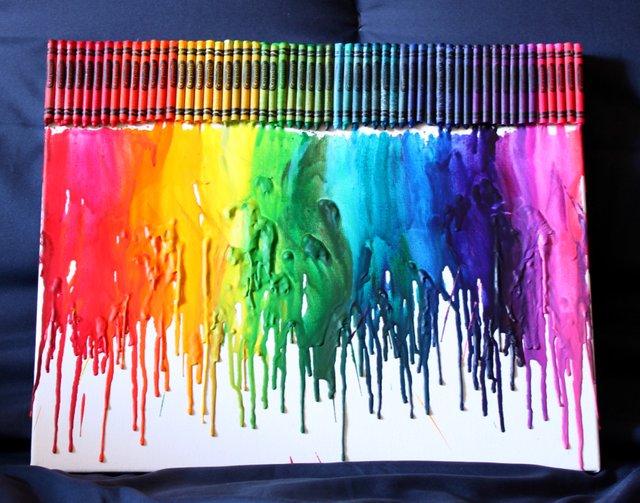 Melted crayons on canvas, a popular Pinterest craft project.
Melted crayons on canvas, a popular Pinterest craft project.Separating the Provided Experiences
I have no such satisfying definition yet, but I did discover an overarching aspect found in all Art. I found this overarching principle by turning my attention toward what an artwork does for us, which is in the experience that it provides. By paying attention to the kind of experience an image provides, for example, can help us to determine whether an image is an illustration, decoration, commercial art, or fine art.
I had an interesting experience with a couple of friends in December 2016 which helped me to arrive at this conclusion. The three of us met up at a popular tea chain store in Ann Arbor, where I briefly noticed a painting of some flowers with a type of impasto effect. Initially not thinking much of the painting, the meaning of Art became the topic of the night (as spurred on by my friend Iver, whose mother is a linguistics professor at the University of Michigan,) when I pointed toward the painting as an example of poor commercial taste. Engaged by the idea of art as experience, I decided to then “experience” the painting for what it is. The experience wasn’t great. The painting was unoffensive, sure, but it was not effectively engaging either. It looked as if it was meant to appear warm and airy, but felt quite mechanical and forced. I could tell by the stylization that it was not amateur artwork, but work created for a purpose: to fill space on the wall. It provided the effect such that, when a visitor entered the coffee shop and scanned the room, the room didn’t look empty. The viewer may subconsciously assess that, yes, this environment is inviting - there are chairs, tables, coffee, and paintings on the wall - everything appears to be as it ought to. It was not Art with a capital A, not meant to inspire or challenge me, or give me a taste for the artist's vision of life. It was simply commercial artwork with a commercial function.
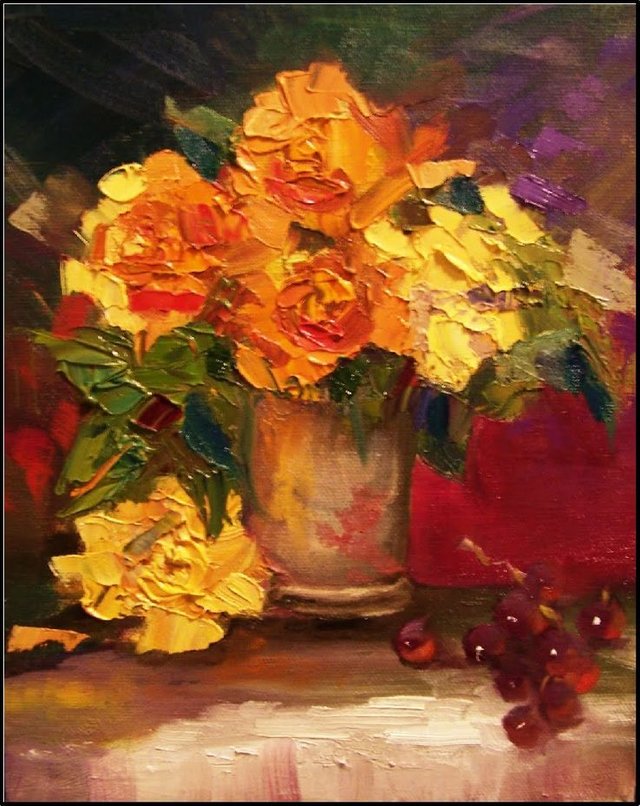
Example of commercial art. A bit more colorful than what I experienced in Ann Arbor.
Similarly, the experience that illustrative artwork provides is a primarily informative or educational. It is usually subservient to a concept or an idea laid out in writing, or serves to express the moods of another person aside from the artist himself (such as album covers or movie posters.) Commercial illustration expresses the sentiments that a storeowner or businessman wants to provide to the prospective customers, hoping to shape a positive image of their business within the client’s mind. Educational illustration helps the student to visualize concepts to better understand them. In all these things, illustration is primarily supplemental to the ideas they illustrate, and its best that any personal input from the illustrator remains in the realm of design sensibility and good taste.
Graphic Design is the process of visual communication and problem-solving, which includes work with typography and logo design, to provide a pleasing visual presentation of information. Subway maps are a great example of graphic design's function, demonstrating how graphic design is factually informative, as opposed to Art's more expressive nature of revealing inner truth.
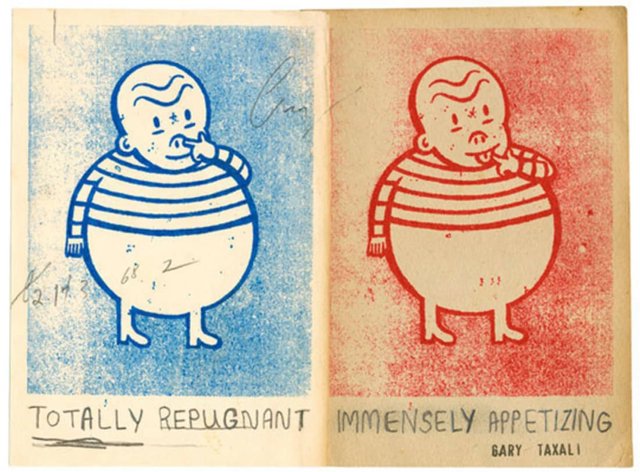
Illustration by Gary Taxali
Decorative art, such as interior design, ornate details on furniture and objects, or appealing facades on homes, have to do with manufacturing beautiful ornamentation on objects whose purpose are primarily functional. This has nothing to do with expressing the craftsman’s internal vision of life, but to improve the visual experience of the owner’s life. It’s distinct from commercial art because it is concerned with decorating functional objects, whereas commercial art has no practical function aside from filling visual gaps and evoking a friendlier atmosphere.
Fine artwork, on the other hand, is different. Whereas all these other types of artwork work to move your attention elsewhere, fine art (or Art-with-a-capital-A,) intends to keep your attention on the work itself. It creates a certain kind of experience meant to be reflected upon, one that is to be watched or perhaps to draw us into a meditative state. I have heard the assertion that Art's real world function is to do no more than to raise the quality of the moment we spend experiencing it, and only that moment.
This unique experience that Art provides is one that is considered to be inspired by the artist’s personal experience of life, expressing the artist's inner world for us to experience as well. The inner realms of the conscious and the unconscious, the realms of thought and the emotional depths of a single individual, are interpreted by that individual’s aesthetic discipline and discretion into the physical realm. That is why it is said that Art takes the invisible and makes it visible, or how it explores hidden realities. Through the artwork, artists can touch on numerous areas in life, informed by their own internal relationships with those areas based upon their life experiences. This means that Art has everything to do with human life itself, drawing upon knowledge from every field and every humanly possible experience.
Centuries ago, it was thought that beauty was the highest purpose of Art, but today we know that this not true, and so I don't take beauty to be the utmost measure of an artwork's quality. This 'beauty' is not just in reference to the quality of craftsmanship, but to the beauty of its subjects, stylization, or its morals. Even the renowned philosopher Tolstoy argued that an artwork can only be good insofar as the goodness of its morality. Though I do believe quality of craft is very important, craftsmanship alone is not a strong indicator to the overall quality of an artwork. I like to draw analogy on the relationship between art and craft to the relationship between language and the message. If you have, for example, an excellent understanding of your language, and you're fairly skilled at writing, but have nothing to say, then there will be no message worth reading to deliver to your audience. On the flip side, if you have an important message to deliver, but cannot write for nuts, it'll be much more difficult to deliver your message to its intended audience.
I believe an additional measure of an artwork's quality is the potency of the experience an artwork provides. I recently visited the Monet exhibit at the Detroit Institute of the Arts. This Monet exhibit was accompanied by a selection of paintings by Frederic Edwin Church, one of which was a painting of a steamboat at sunset that just infected me. I stood mesmerized by the painting as a feeling of awe washed over me. When I went to walk away, my accompanying partner walked up to me and pointed to the same feeling and remarked, "What a powerful painting! I felt a sense of impending doom." How I wish a good reproduction was available online, but I did discover that the painting was just recently recovered in the past decade or so. The painting instill in both my partner and I a very real feeling, and we're both hard nuts to crack when visiting museums. That's what I call a potent experience! How strong of an experience does your artwork provide that is strongly you?
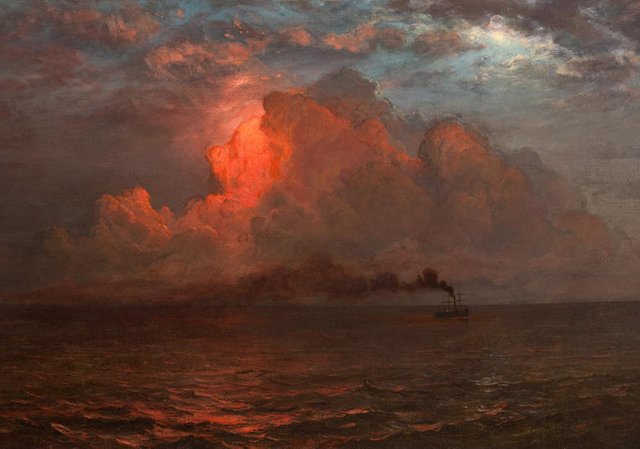
Evening on the Sea, Frederic Edwin Church, 1877. This painting combined master craftsmanship with potency of vision, creating an impactful experience for viewers at the D.I.A.
The Internal Experience and Expressive Fulfillment
This is where the typical master craftsman-turned ineffective artist fails to look beyond his tools and technique. While he is entirely knowledgable about the physical side to his work, he remains unaware of its internal side. He doesn’t dip into his emotional depths or his relationship with life. His work is not an indicator of his perspective upon the world, or how he sees the world through his mind as opposed to his eyes. Such artwork is not yet made with a reason beyond obtaining his extrinsic motivations or accomplishing extraneous goals. Even seemingly related goals, such as winning artist achievement awards, typically have more to do with fluffing the ego and appealing to certain audiences than it does with creating timeless artwork that sincerely convenes with the spirit.
The "art world" is not yet an artistic meritocracy; it genuinely prefers to open its wallets to the politically relevant and the socially fluent artists. The "art world" is a large but densely foggy field, and many within it cannot see beyond the perimeter of their camps. Of course, it's typically in a younger artist’s financial benefit to bend themselves toward the appeal of the few who both want to help artists and happen to afford it. Unfortunately, many of these people typically have no understanding of Art. These humanitarians or businessmen are unlikely to separate good artistic visions that genuinely resonates with them, from art whose subjects or ideologies, themselves, simply happen to make them feel good.
It’s easy to make anyone feel good when you appeal to their ideologies. It's not so easy to dig into the premises of your beliefs and explore your experience of life to discover the universal within all of mankind. It is no wonder so many artists continue to create work that fails to fulfill their deepest emotional needs. If I had never acquired a more thorough understanding of Art, but had enough people reassuring me of my talent, admiring my work, and meeting my needs for survival all the same, I would never suspect a lack of emotional fulfillment to come from an inadequacy in my own artwork.
I have an inkling that the painter Thomas Kinkade, who died of an overdose of alcohol and Valium, was certainly not meeting his own artistic fulfillment. He could not see beyond his craftsmanship, his work’s appeal to his specific audience, and in my opinion, subconsciously knew he was living a lie from which he could not escape. This behavior does not result in artwork that resonates deeply with the human spirit, artwork that instructs or inspires the generations, nor does it lead to artwork that transcends political, cultural, or economic boundaries. I am doubtful that tomorrow’s great museums will be adorned with Kinkades.
The Law of Correspondence and Art as Self-Discovery
Art is a human endeavor. Every animal knows how to meet its means for survival, is capable of some form of communication, maintains social structures and is capable of obtaining shelter, and engages in sexual reproduction. But I am inclined to think that what we call the humanities is the sum of activities that are exclusively human. The one thing that has elevated our species above the rest of life on earth is our perpetual search for meaning. We are on a perpetual hunt for purpose, always recognizing patterns, and always attempting to derive meaning in our life. If this wasn’t true, then the answer that, “there is no meaning to life,” would never have had to been claimed. And though many species are curious, their curiosity often begins and ends with seeking better resources for survival. Humans, on the other hand, are curious beyond what is necessary for survival. We have an itch to generate meaning like no other species on this planet. From the science to art, we seek to expand our scope of understanding. Big artistic projects, just like scientific research, generally deal with questions that humanity has not yet found an answer. Regardless of life’s actual meaning, we clearly seek it out.
For those artists who have, like myself, mastered their craft, but have not wholly developed their artistic vision, I have good news: our artworks can act as tools for our own instruction. The expression of one’s vague feelings, to clarify them for oneself and others, is one of artistic creativity’s primary purposes. In other words, our art can teach us something about ourselves. Art’s purpose is to A.) express meaning of oneself to others, and B.) create a self-produced product that allows artists to reflect upon and learn about themselves. This dual purpose has everything to do with a piece of ancient Hermetic wisdom.
Hermeticism was a religious, philosophical, and esoteric tradition that heavily influenced the esoteric pursuit of the alchemy. Art is Alchemy was developed upon the Hermetic principle of correspondence: “As is above, so is below. As is within, so is without. As is the universe, so is the soul.” The artistic vision guides the artist’s creation, the vision allowing him to see both within himself for what is really there, and without himself unto the canvas. This allows the artist to observe how the visible effects he receives from experiencing his work-in-progress correspond with the invisible motion he senses within himself. This is useful, because his artwork is effectively made in an effort to closely align his artwork - a piece of the external world - with his own internal reality.
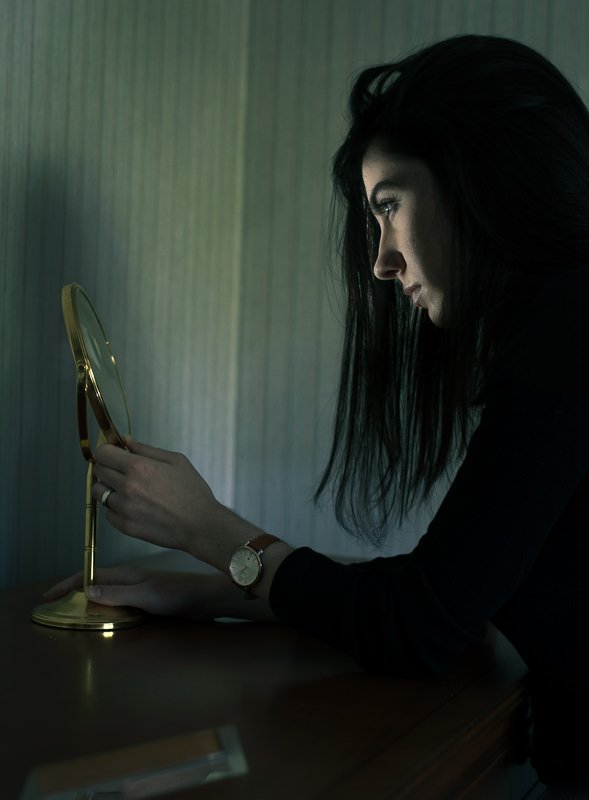
I am no devotee of esoteric knowledge, nor do I believe that an alchemist can transmute lead into gold with the so-called philosopher’s stone. However, I do see the relevance of correspondence in the world. I see it reflected in the subjective and malleable nature of the human perspective all the time. What people believe about the world dramatically shapes their experience of the world, and can even quite literally affect their senses and physical perception. A subtle lesson Socrates hinted towards was that you could not deepen your knowledge of the outside world without deepening your self-knowledge; as within so without. Where else is this principle more relevant than within the artistic pursuit?
You cannot make the most of art’s inherent power and purpose, if you have not made an earnest effort to know yourself. Who you think you are, what you believe, what you’ve experienced, enjoyed or disliked, what you know, and what you don’t, all have a cumulative impact on what you produce. The most sensitive of such products, the type that is bound to change at a moments notice with the introduction of new material, is your creative product; your artwork. Thankfully, the input of your effort into the work immediately shapes the output of effect that the artwork provides. Likewise, everything you put into your overall artistic development will be directly reflected back towards you for your own observance.
In this way of thinking, I consider the work of artists of a lesser developed artistic vision to be gold ore: an unrefined mass with fragments of valuable gold shimmering from within. Artists with a well-developed artistic vision, on the other hand, have gone through the lengthy process of extracting these fragments of gold, smelting them together, and clearing the gold of dross that has risen to the surface. Their work is quite refined, and as I have witnessed, can strongly move you.
Summary
This chapter wasn't in my mind when I decided to write a more in depth interpretation of the three stages of the alchemist's self-refinement. However, I know from experience that developing my own working definition of Art has strongly impacted the direction of my artwork. To take a more critical look at what has helped shaped the value of Art in my eyes, and reaffirmed my purpose as an artist.
For those of you who have made it through this entire article, I appreciate your time and I hope that these ideas made sense to you. As I wrote in the introduction, my thoughts are not rules written in stone, but ideas from a young man who has spent a lot of time pondering the nature of the arts. I'm a desperate searcher, always struggling to attain more knowledge, insight, and wisdom regarding the things I love. Art is one of my highest priorities on that list. If you feel you have anything to add, argue, or reaffirm, I highly recommend you take to discussion in the comments below.
I will return soon with the fourth chapter to Art is Alchemy, to hopefully finally finish the series, and delivering my interpretation on the third stage of artistic refinement: self-realization. Stayed tuned for more!
If you love what you read, please support my effort by upvoting and resteeming. I also have limited edition archival prints of my well-received "Penalty Box" and "The Eye" photographs.
Follow my creative journey on Instagram!
John Dykstra
Thanks for this John, I find it really helpful! I don't think I've ever taken a stab at writing down what makes an artwork meaningful. It's more intuitive: I know it when I see it, and otherwise everything else that I look at simply doesn't cut it. I do like the following quote: "Art, in itself, is an attempt to bring order out of chaos," if this can be applied to all possible levels of meaning.
Thank you, Stephen! Is that quote from Peterson? I remember him stating or perhaps repeating those words. It's a great way to look at Art!
From what I can remember Peterson often states that the place where one ought to be is in between order and chaos. There was one interview I loved where he says something to the effect of, "The artist can't tell you what they're up to. They have no idea." It's a very mystical understanding of the artist at work!
Thank you for putting these thoughts into writing. They mirror a lot of what has been going through my mind the last few years as I have pursued art more seriously. Keep it coming, and I can't wait for the book. :)
That's awesome to hear! I'm glad this is resonating. Thank you, Stephanie!
World of Photography Beta V1.0
>Learn more here<
You have earned 5.15 XP for sharing your photo!
Daily photos: 1/2
Daily comments: 0/5
Multiplier: 1.03
Server time: 11:13:16
Total XP: 274.36/400.00
Total Photos: 19
Total comments: 7
Total contest wins: 4
Follow: @photocontests
Join the Discord channel: click!
Play and win SBD: @fairlotto
Daily Steem Statistics: @dailysteemreport
Learn how to program Steem-Python applications: @steempytutorials
Developed and sponsored by: @juliank